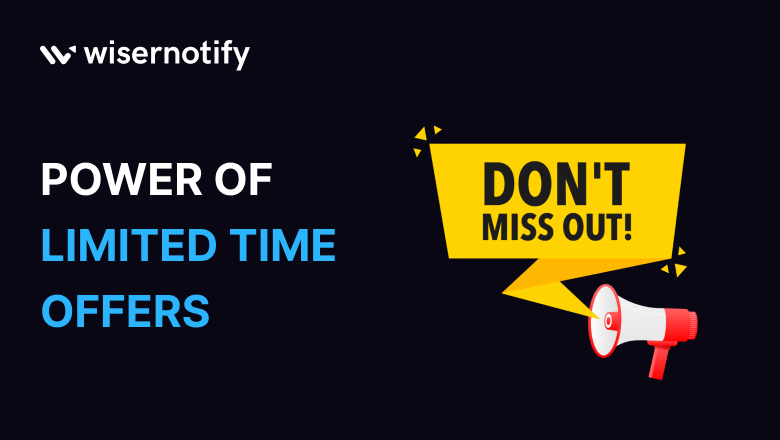If you’re looking for a surefire way to boost sales, increase customer engagement, and leave your competitors in the dust, you’ve landed in the right spot.
In this guide, you will learn exactly how to create and execute killer limited-time offers that get your customers clicking “Buy Now” faster than any other tactics.
So buckle up, and let’s get started!
What Are Limited Time Offers?
Let’s kick things off with the basics: what exactly is a limited time offer?
In a nutshell, a limited time offer (LTO) is a special deal, discount, or promotion that’s only available for a short period.
Think of it like a flash sale, but with a twist. It could be a percentage discount, free gift, free shipping offer, or something else entirely.
Limited time offers appeal to online shoppers by creating urgency and driving engagement, as they are sensitive to cost and attracted to exclusive deals.
The key is that it creates a sense of urgency and scarcity that compels your customers to act fast before they miss out on a great deal.
Visitors leave your website without taking action?
They don’t trust your site or feel urgency to act. WiserNotify builds both, turning doubt into action & visitors into customers.
Why Limited Time Offers Work (The Psychology Behind It)
Now, you might be wondering, “Why do limited time offers work so well?”
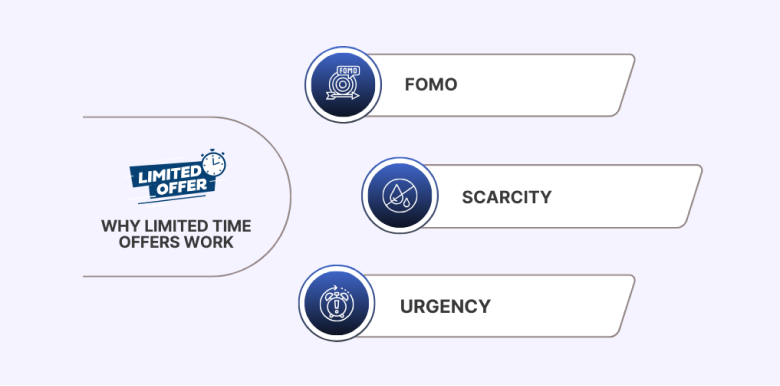
Well, my friend, it all boils down to human psychology.
FOMO (Fear of Missing Out): We humans are hardwired to avoid missing out on something good. When we see a limited time offer, our brains go into overdrive, thinking, “If I don’t act now, I might regret it later!” This powerful emotion drives us to make impulse purchases we might not otherwise make.
Scarcity: Limited quantities and time offers tap into the principle of scarcity. When something is scarce or in limited supply, we perceive it as more valuable. This makes us more likely to want it and buy it.
Urgency: The ticking clock of a limited time offer creates a sense of urgency that compels us to take action. We don’t want to miss out on the deal, so we act quickly, often without fully considering the consequences.
Think of it like this:
Imagine you’re walking down the street and you see a sign that says, “Ice Cream Sale! 50% off for the next hour only!”
Would you be more likely to buy ice cream then and there? Or would you wait until later this holiday season when the price is back to normal?
My guess is you’d be more likely to buy it on the spot. That’s the power of a limited time offer in action.
These psychological triggers lead to more sales by encouraging customers to make quick decisions and take advantage of the offers.
Learn how Wisernotify can improve your limited-time offers, create a sense of urgency, and leverage social proof to build trust with your audience.
Visitors leave your website without taking action?
They don’t trust your site or feel urgency to act. WiserNotify builds both, turning doubt into action & visitors into customers.
7 Fresh Limited Time Offers Examples to Learn From
Now that you understand the psychology behind limited time offers, let’s get down to brass tacks and look at some specific strategies you can use to create your own irresistible and promote limited time offers here.
1. The Flash Sales
Flash sales are like the rock stars of limited time offers. They’re short, intense blasts of excitement that create a massive sense of urgency.
How to do it:
Pick a hot product: Choose something that’s already popular or that you want to give an extra sales boost.
Slash the price: Offer a steep discount, like 50% off, for a limited time – think just a few hours or a day.
Spread the word: Promote your flash sale like crazy across all your channels: email, social media, website, etc. Use eye-catching visuals and a countdown timer to build anticipation.
Example: Everlane’s “Choose What You Pay”
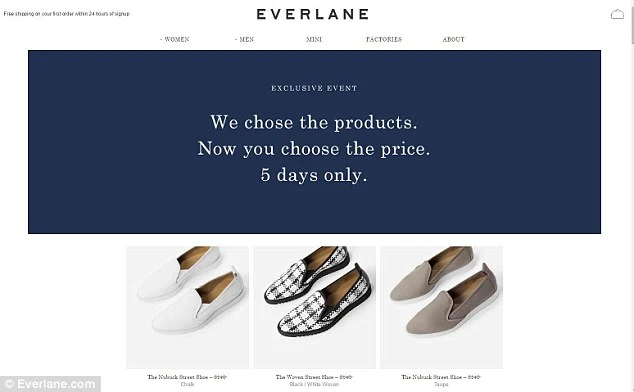
Everlane isn’t just about selling clothes; they’re masters at creating a shopping experience that feels exclusive and exciting.
Their “Choose What You Pay” section isn’t just a sale rack; it’s a treasure trove of past-season favorites at mind-blowing discounts.
Think 70% off a cashmere sweater that you’ve been eyeing for months. But here’s the kicker: it’s not just about the deep discounts.
Everlane cleverly displays how many items are left in each size, adding a layer of scarcity that pushes shoppers to act fast before their size is gone.
And to top it off, these sales often only last for 48 hours, creating a sense of urgency that’s hard to resist.
Don’t Miss: How Limited Seats Available Messages Rapidly Boost Sales
2. The Early Bird Special
This one’s for the planners and the eager beavers. It’s a way to reward your most loyal customers and entice new customers in to buy before everyone else.
How to do it:
Offer an exclusive discount: Give a special price to customers who buy within a certain time frame before a product launch or a big sale.
Create a sense of exclusivity: Make your early birds feel like VIPs with special perks, like early access to new products or sneak peeks.
Example: Apple’s Pre-Order Perks
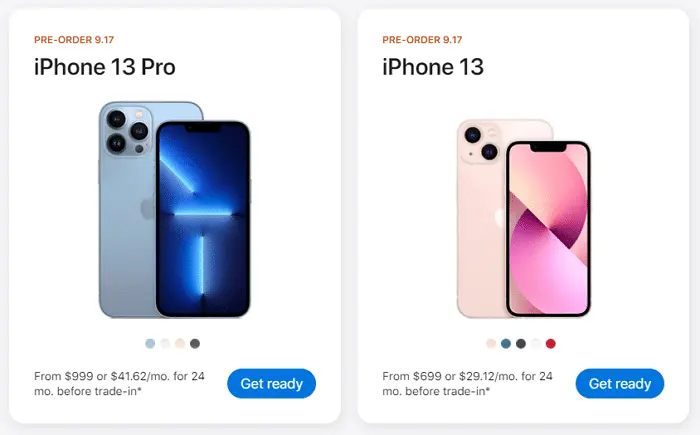
When Apple announces a new iPhone or MacBook, you can bet there’s a horde of eager fans ready to pre-order. Apple knows this, and they use it to their advantage.
By offering pre-orders at a set price, they secure early sales and create buzz.
But the real genius is in the perks they offer to early birds. It’s not just about getting the product first; it’s about feeling like a VIP.
Maybe you get a free accessory, a personalized engraving, or even an exclusive event invitation. This makes the pre-order an experience, not just a transaction.
3. The Free Shipping
Everyone loves free shipping, right? It’s a simple but effective way to encourage customers to add more to their cart and complete their purchase.
How to do it:
Set a minimum purchase amount: To improve average order value, offer free shipping on orders over a certain amount.
Make it time-limited: Add a deadline to create urgency and drive sales.
Example: Amazon’s Prime Shipping Dominance

Amazon didn’t become an e-commerce giant by accident. Their Prime membership program is a prime example of how to use free shipping to drive customer loyalty and skyrocket sales.
For a flat annual fee, Prime members get unlimited free two-day shipping on millions of items.
This has fundamentally changed the way people shop online, making Amazon the go-to destination for everything from books to electronics.
And let’s not forget their limited-time free shipping promotions, which create a sense of urgency and encourage impulse buys.
Check Out: Effective Discount Strategies to Drive More Sales
4. The BOGO Bonanza (Buy One, Get One)
BOGO offers are a classic for a reason. They tap into our desire to get more for our money and feel like we’re getting a good deal.
How to do it:
Offer a free or discounted item: Give customers a second item for free or at a reduced price when they purchase a specific product.
Choose complementary products: Pair items that go well together to encourage customers to buy more.
Example: Bath & Body Works’ Fragrance Chaos
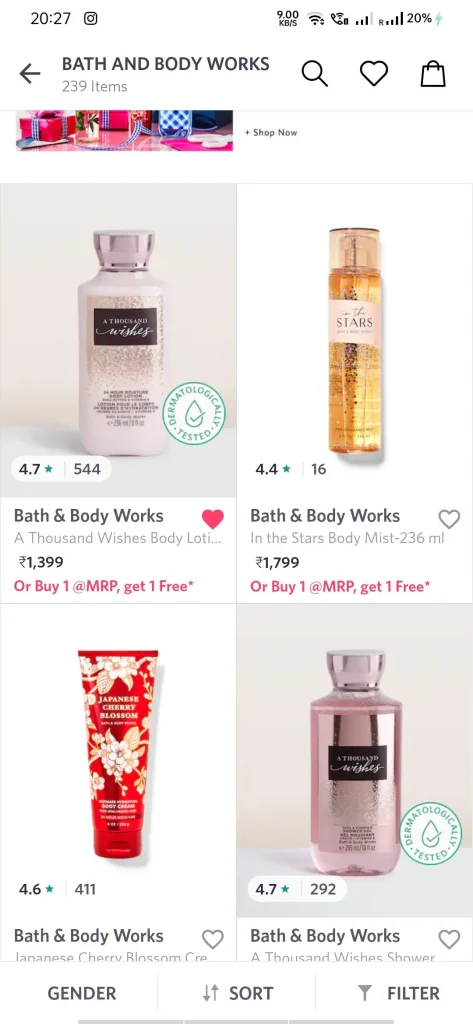
Bath & Body Works is the queen of BOGO sales. They strategically time these sales around holidays and special events, creating a sense of anticipation and excitement.
But it’s not just about getting two for the price of one. They cleverly pair items that complement each other, like a body lotion and a matching fragrance mist.
This not only increases the average order value but also introduces customers to new products they might not have tried otherwise.
5. The Gift with Purchase
Who doesn’t love a freebie? A gift with purchase is a great way to add perceived value to a product and make customers feel appreciated.
How to do it:
Choose a relevant gift: Select a gift that complements your product and appeals to your target customer.
Set a minimum purchase amount: Offer the gift on orders over a certain amount to incentivize larger purchases.
Example: Sephora’s Deluxe Sample Delights
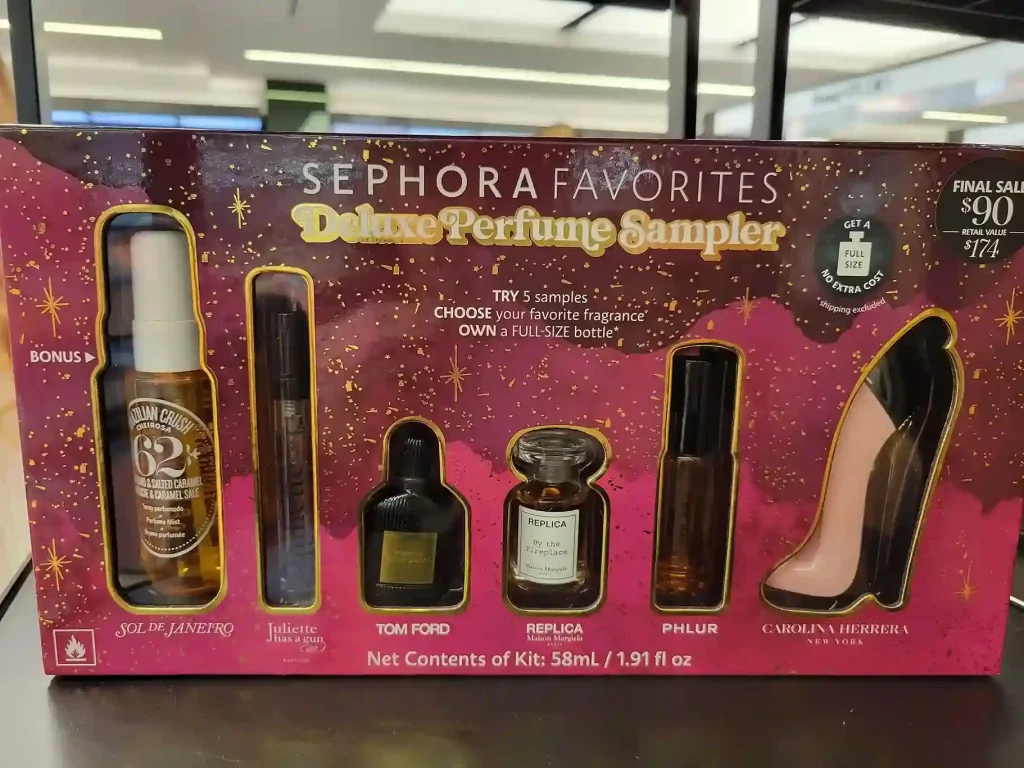
Sephora understands the power of a little something extra. Their gift-with-purchase promotions are a masterclass in adding perceived value.
They offer deluxe samples of high-end brands like Chanel and Dior, which not only entice customers to spend more but also introduce them to new products they might fall in love with.
This creates a win-win situation: customers feel pampered and appreciated, while Sephora gets to showcase their vast selection of products.
6. The Mystery Discount Deal
This one’s a bit more playful and adds an element of surprise and excitement to your offer.
How to do it:
Create a discount code: Generate a unique code that customers can enter at checkout to reveal their discount.
Tease the discount: Don’t reveal the exact percentage upfront. Let customers discover their savings at checkout.
Example: J.Crew’s Email Persuasion
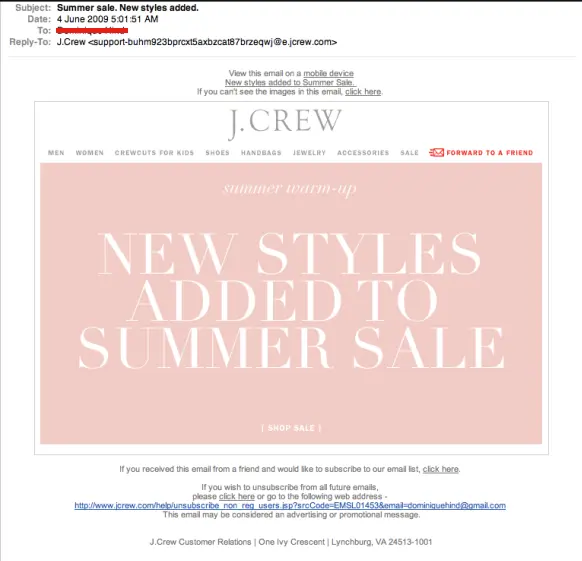
J.Crew knows how to pique curiosity and create excitement with their mystery discount emails.
They use subject lines like “Summer Sale. New Style Added!” or “You won’t believe this deal!” to get people to open their emails.
Once inside, customers are greeted with a unique discount code they can use at checkout.
The discount percentage isn’t revealed until they reach the cart, adding an element of surprise and delight that makes the shopping experience more fun and engaging.
7. The Customer Loyalty Program Perks
Reward your most loyal customers with exclusive, limited time deals and offers. It’s a fantastic way to increase customer loyalty and keep them coming back for more.
How to do it:
Create a loyalty program: Develop a tiered rewards program where customers earn points for purchases and can redeem them for discounts, exclusive products, or early access to sales.
Offer limited time bonuses: Surprise your loyal customers with special offers, like double points days or bonus rewards on specific products.
Example: Sephora’s Beauty Insider Brilliance
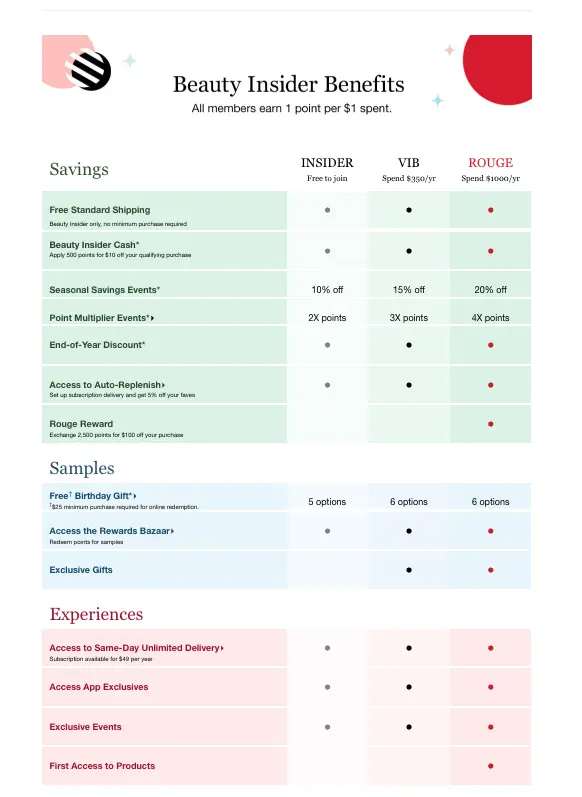
Sephora’s Beauty Insider program is more than just a rewards program; it’s a community.
Members earn points for every purchase, which can be redeemed for discounts, exclusive products, and even early access to sales.
But Sephora doesn’t stop there. They regularly offer limited-time bonuses for Beauty Insider members, like double points days or special gifts with purchase.
This creates a sense of exclusivity and makes members feel valued, which in turn fosters loyalty and encourages repeat purchases.
Build trust & FOMO
Highlight real-time activities like reviews, sales & sign-ups.
Step-by-Step Plan to Execute a Killer Limited-Time Offer Campaign
Step 1: Define Your Goals (Get Crystal Clear)
Before you even start brainstorming your offer, take a good hard look at your business objectives.
What do you want to achieve with your limited-time offer?
Is there a new product launch you want to promote?
Maybe an older product that needs a sales boost?
Do you have excess stock you need to move?
Are you looking to expand your customer base and reach a wider audience?
Perhaps you want existing customers to spend more per purchase, or you’re looking to re-engage dormant customers or increase social media interactions.
Your goals will shape every aspect of your campaign, from the type of offer you choose to the channels you use to promote it.
Step 2: Choose Your Offer (Make It Irresistible)
Now that you know what you want to achieve, it’s time to craft an offer that’s too good to pass up.
A flash sale with a steep discount, like 50% off for 24 hours, can create a sense of urgency and excitement.
An early bird special, offering a discount to the first 100 customers, can incentivize early adopters and build buzz.
Free shipping on orders over a certain amount or for a limited time is always a crowd-pleaser.
If you have products that complement each other, consider a BOGO (Buy One, Get One) offer to increase average order value.
A free gift with purchase can add perceived value and make customers feel appreciated.
A mystery discount code, revealed at checkout, adds an element of surprise and delight.
And don’t forget about your loyal customers – offer them exclusive discounts or rewards through a loyalty program.
Step 3: Set a Time Frame (Create Urgency for the Holiday Season)
The essence of a limited time offer is the ticking clock. The shorter the time frame, the greater the sense of urgency.
But don’t make it so short that people don’t have a chance to see and act on your offer.
A few hours can be ideal for flash sales and last-minute deals, while a few days might be better for building anticipation and giving people time to decide.
If you’re running a larger promotion or want to reach a wider audience, a week or more might be the way to go.
Consider your target audience and their buying habits when choosing your time frame.
Must Read: How to Create Urgency in Sales (11 Effective Strategies)
Step 4: Craft Your Messaging (Make It Compelling)
Your messaging should be like a siren song, seducing customers to your offer.
Highlight the value proposition of your offer – what makes it special?
Why should customers care?
Emphasize the scarcity using phrases like “limited time,” “while supplies last,” and “don’t miss out.”
Use strong calls to action that tell your customers exactly what to do, like “Shop Now,” “Claim Your Discount,” or “Get Yours Before They’re Gone.
Don’t forget to personalize your messaging based on customer segments, making it as relevant and enticing as possible.
Step 5: Design Your Visuals (Grab Attention)
In the world of online marketing, visuals are king. Your limited time offer needs to stand out from the crowd.
Use professional, high-quality images that showcase your product or service in the best light.
Choose bold colors that pop and contrast with your website or landing page. Select easy-to-read fonts that are large enough to be seen on mobile devices.
A countdown timer can be a powerful visual element, reminding viewers of the limited time remaining and creating a sense of urgency.
Step 6: Choose Your Channels (Spread the Word)
Don’t limit yourself to just one channel. Instead, spread the word across all your marketing platforms.
Craft a compelling email that clearly communicates your offer and includes a strong call to action.
Segment your list to send personalized offers to different groups. Don’t forget to include a countdown timer to create urgency!
Get social and spread the word across all your platforms.
Use eye-catching images, create engaging stories, and run contests or giveaways to generate buzz.
Use relevant hashtags like #flashsale, #limitedtimeoffer, or #dontmissout to reach a wider audience.
Make sure your offer is front and center on your website. Use banners, pop-ups, and dedicated landing pages to highlight the offer.
You can even personalize the experience by showing different offers to different website visitors based on their browsing behavior or demographics.
If budget allows, consider running targeted ads on social media platforms like Facebook, Instagram, or Pinterest.
You can also use Google Ads to reach people who are actively searching for products or services like yours.
Step 7: Monitor and Optimize (Make Data-Driven Decisions)
Launching your limited-time offer is just the beginning. Now it’s time to roll up your sleeves and dig into the data.
Don’t just cross your fingers and hope for the best; take a proactive approach to optimize your campaign’s performance.
Use your website analytics to track how many people are landing on your offer page.
Is the traffic meeting your expectations?
Dive deeper into your conversion rates – how many visitors are clicking that “Buy Now” button?
If the numbers are lower than you’d like, it might be time to tweak your messaging or visuals. Keep a close eye on your average order value.
Are customers spending more than usual during the promotion?
If not, consider adding a minimum purchase requirement for the discount or offering a free gift with larger orders. Don’t forget to monitor social media engagement.
Are people sharing your offer, commenting on your posts, or using your branded hashtags?
If not, try spicing up your social media content with eye-catching visuals or running a contest to spark excitement.
Step 8: Follow Up (Build Lasting Relationships)
The sale might be over, but your relationship with your customers is just beginning. The follow-up is your chance to turn one-time buyers into loyal fans.
Start with a heartfelt thank you email to everyone who participated in the promotion. Let them know how much you appreciate their business.
You can even sweeten the deal with a discount code for their next purchase.
Consider sending a post-purchase survey to gather feedback and learn what your customers loved (and maybe didn’t love) about the offer.
Use this feedback to improve your future campaigns.
If you have a loyalty program, make sure to reward your customers with points or special perks for their participation.
This will incentivize them to continue shopping with you and deepen their engagement with your brand.
Remember, a limited-time offer is not just about driving short-term sales; it’s about building lasting relationships with your customers.
Common Mistakes to Avoid with Limited Time Offers
Even the best-laid plans can go twisted. So, let’s shine a light on some of the most common blunders folks make with limited time offers:
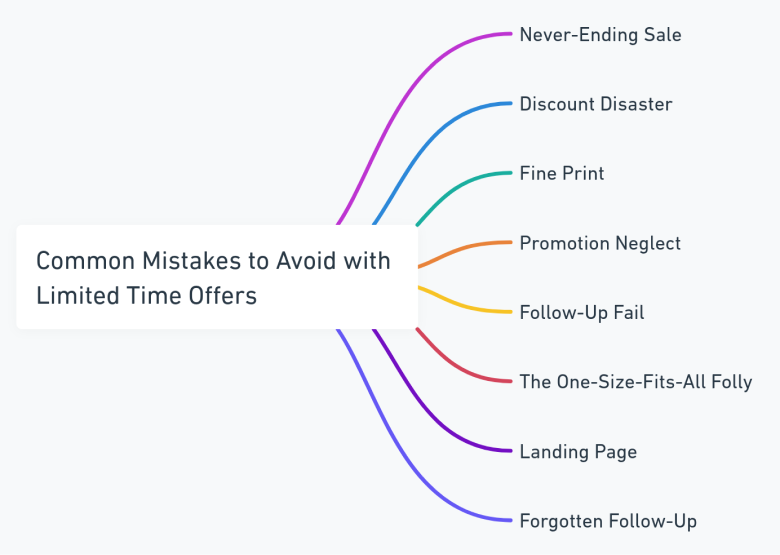
1. Never-Ending Sale
If your “limited time offer” is always running, it’s not really to implement limited time offers, is it?
This dilutes the sense of urgency and makes your customers less likely to take action. Don’t cry wolf too often.
2. Discount Disaster
Don’t slash prices so low that you’re losing money. It’s a surefire way to tank your profits. Find a sweet spot that gives customers a great deal without hurting your bottom line.
3. Fine Print
Don’t hide important details in tiny, hard-to-read text. Be transparent about the terms and conditions of your offer. No one likes surprises at checkout.
4. Promotion Neglect
A a limited time sale or offer is only as good as its promotion. If no one knows about it, it’s not going to drive sales. Shout it from the rooftops!
Use email, social media, your website, and even paid ads to get the word out.
5. Follow-Up Fail
Don’t forget to follow up with customers after your offer ends. Thank them for their purchase, or let them know about future offers they might be interested in.
This helps build relationships and encourage customers to come back for more.
6. The One-Size-Fits-All Folly
Your customers are unique, so your offers should be too. Don’t use a generic offer for everyone.
Segment your audience and tailor your offers to their specific needs and interests. This will make your offers more relevant and compelling.
7. Landing Page
Your landing page is the heart of your limited time offer. Make sure it’s clear, concise, and visually appealing.
Highlight the key benefits of your limited time, offer examples well, use a strong call to action, and make it easy for customers to complete their purchase.
8. Forgotten Follow-Up:
After the sale, don’t ghost your customers. Send a thank-you email, offer a discount on their next purchase, or let them know about other products they might like.
This keeps the conversation going and helps build customer loyalty.
By avoiding these common mistakes, you’ll be well on your way to creating limited time offers that drive sales, and boost customer engagement, and leave your customers feeling happy and satisfied.
Build trust & FOMO
Highlight real-time activities like reviews, sales & sign-ups.
Ready to Boost Your Sales?
There you have it – a comprehensive guide to creating and executing limited time offers that will have your customers lining up (virtually) to buy your products.
Now, I’d like to hear from you. Which strategy are you most excited to try? Are you planning a flash sale? Or maybe you’re going to surprise your loyal customers with a gift with a purchase?
Let me know in the comments or in social media handles!
Remember, the key to success with limited time offers is to be creative, experiment with different approaches, and always focus on providing value to your customers.
And most importantly, have fun with it! After all, who doesn’t love a good limited time deal anyway?
